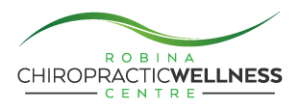

With over two decades of chiropractic experience, I’ve witnessed the remarkable impact that chiropractic biophysics traction can have on individuals seeking relief from pain. It was only when I began incorporating this specialized technique into my practice that I witnessed tangible, lasting changes in people’s pain levels.
Chiropractic biophysics traction is not merely a buzzword; it’s a transformative technique aimed at addressing the root causes of spinal misalignments. Commitment to learning the technique and investing in traction machines is essential, making it one of the most researched and studied chiropractic techniques globally.
So, how does it work?
1. Precision in Alignment: The focus of chiropractic biophysics traction is achieving precise spinal alignment. By gently applying traction, we aim to restore the spine to its optimal position, promoting better biomechanics and addressing nerve compression and muscular imbalances.
2. Targeting the Source: This technique uniquely targets specific areas causing discomfort, tailoring the approach to individual needs. Our specialization in X-ray assessment allows us to customize tractions for each patient, ensuring a targeted and effective treatment plan.
3. Promoting Structural Integrity: Beyond pain relief, chiropractic biophysics traction emphasizes the importance of structural integrity. Similar to a building’s foundation, a misaligned spine compromises the entire structure. By restoring proper alignment, we contribute to overall spinal health, reducing the likelihood of future issues.
4. Patient-Centric Approach: What sets chiropractic biophysics traction apart is its patient-centered approach. No one-size-fits-all solutions here. Instead, we consider the unique biomechanics and requirements of each individual, developing a personalized program of care, including in-house and at-home exercises. Regular reassessment ensures progress and effectiveness.
Now, the burning question: Does chiropractic biophysics traction create real change?
Absolutely. Patients have experienced significant improvements in pain levels, mobility, and overall well-being. While results may vary, depending on the condition, severity, and patient commitment, the consistent use of traction over the past 15 years has shown continually improving outcomes.
If you have questions or want to explore further, perhaps by visiting our clinic, I’m here to chat. Here’s to a pain-free and healthy thriving life!
